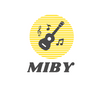There are many different sizes, woods, types and brands out there on the market but it can and will be very rewarding when you find the right one. However, it’s not like matching a wand with a wizard (Harry Potter reference). In this guide I’ll try to explain the main differences between various types of ukuleles.
WHAT UKULELE SIZES ARE THERE?
It’s only natural for a ukulele buying guide to pay attention to the main sizes of a ukulele. There are four of them: soprano, concert, tenor and baritone. More recently the sopranissimo has been gaining popularity, which is even smaller (16 inches, 40 cm) than the soprano ukulele.

The soprano is the most traditional size, at 20 inches (51 cm). This is the most common instrument and also the size that most people associate with the ukulele. It also makes that really typical, classic, bright ukulele sound. It typically has 12-15 frets and a standard tuning of GCEA.
One step bigger is the concert ukulele at 23 inches (58 cm) with 15-20 frets. The body is bigger and the neck is longer with more room between the frets, which makes it a little bit easier to handle. Like the soprano, it has that typical, classic ukulele sound, but it is a bit louder.
A size that has recently been gaining popularity is the tenor ukulele at 26 inches (66 cm). It strays a little bit from the ukulele sound, with a deeper pitch than the soprano and concert ukuleles, like a classical guitar (more ukulele than classical sound of course). Most professional and well-known ukulele players go for a tenor ukulele – James Hill is one example.
The largest of the bunch comes in at 30 inches (76 cm) and is called the baritone. This one obviously has the deepest tone and sounds even more like a classical nylon-stringed guitar. This is the least popular ukulele, since many players choose the ukulele for its size, portability and ukulele sound (and the baritone sounds kind of like a guitar). The tuning also differs from the other sizes: it is also more guitar-like.
WHAT WOOD TYPE TO PICK?
If you have done a little bit of research already, perhaps in another ukulele buying guide, you will have noticed that there are all kinds of different woods used for ukuleles: monkeypod, mahogany, mango, koa, rosewood, cedar, acacia…the list goes on. I will discuss the ones most commonly used.

Koa is the quintessential Hawaiian wood, so most ukuleles that come from Hawaii are made of koa. This kind of wood has a beautiful grain, a very warm sound and is just plain amazing. Koa wood is used on the more expensive ukuleles.
The mid-range ukuleles are usually made of mahogany (of course solid mahogany ukuleles are more expensive). Mahogany sounds a little bit softer than koa, but it’s still a good choice of wood and less expensive than koa.
Besides koa and mahogany, spruce is the most common wood type. Spruce is used on the lower-end ukuleles, such as Mahalos.
SOLID OR LAMINATED WOOD UKULELE?
The terms solid and laminated speak for themselves. But simply put, solid means that the wood you see on the outside is also the wood on the inside. Laminated instruments are cheaper than solid ones: cheaper wood is used on the inside and a thin layer of better wood is used on the outside. This not only improves the aesthetics but can also improve the sound when compared to solid wood ukuleles.
WHAT UKULELE BRAND TO CHOOSE?
It’s really difficulty help you with this, since there are a lot of decent quality brands out there. The most popular ukulele brands are Kala, Mahalo, Lanikai, Pono, Kamaka, Luna and Kanilea. Pono and Kanilea offer the higher-end ukuleles, while Kala has a broad range with lower and higher-end instruments. They also offer very decent starter kits and are widely available.

So what can you take from this ukulele buying guide?
If this ukulele buying guide teaches you one thing, let it be the following. It’s important to do good research about the ukulele you’re going to buy, so that you end up buying an instrument you will enjoy for many years to come. As always with instruments, go and try them out at your local music store if possible. Otherwise check reviews and ask the shops what they recommend for your level.
If you are serious about wanting the play the ukulele, I would suggest skipping the cheap budget starter sets (going for $20-$50) and begin with a decent $100 ukulele. It will make your life a lot easier (in terms of tuning, intonation, etc.), you will have more fun and you’ll pick your instrument up a lot more!
What online store do I recommend? The MIBY shop should be your choice. The transaction went very smoothly and the owners they were very helpful when helping you to choose the right ukulele.



